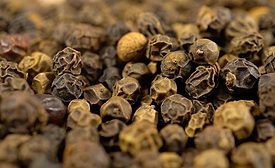Home » Publications » Food Safety Magazine
Our Publications
Please select a publication below.
Food Safety Magazine

August/September 2024
Cover Story
Back to TopThe scope and seriousness of the lead contamination of applesauce pouches for children reaffirm the need to modernize the recall process in the U.S.
Read More
Features
Back to TopReimagining Sushi Safety: A Collaborative Approach to Food Standards
The National Fisheries Institute's newly established Sushi Council aims to enhance food safety standards in the sushi industry through collaboration and implementation of rigorous guidelines
August 5, 2024
Harnessing Cold Plasma Technology for Decontamination of Food and Food Contact Surfaces
Cold plasma is a novel, promising technology that has shown abundant possibilities for disinfection in food processing environments
August 6, 2024
Revisiting the Foreign Material Prevention Equation: The Responsibilities of Foodservice
Foodservice executive teams must understand the risk that foreign material (FM) poses to the brand and ensure that the resources for a knowledgeable FM team are a top food safety priority
August 6, 2024
Columns
Back to TopEnhancing the Resilience and Sustainability of the Frozen Food Supply Chain
A look at the intersection of carbon footprint, food safety, and quality
Read More
The Window on PFAS is Closing 'PFAST'
State action on PFAS is ongoing, and many states are currently seeking to adopt new rules for PFAS in food packaging or expand the scope of existing laws
August 7, 2024
Challenges for Evaluation of Your Environmental Monitoring Program
EMPs are not just documents to be written and forgotten, but living systems that require active management
August 8, 2024
How is the Revolution in Technology Changing Food Safety?—Part 2
How has adoption of different technologies affected processors' daily food safety operations and improved their food safety outcomes?
August 8, 2024
Next-Gen Hygiene: How Do Collaborative Robots Affect Food Safety Programs?
Whenever a new piece of equipment, such as a robot, is incorporated or a process is changed, the food safety plan and the hazard analysis must be reanalyzed
August 8, 2024
Harnessing AI to Safeguard Food Safety in the Face of Climate Change
In the wake of escalating concerns over climate change and its profound impact on global food safety and security, innovative solutions are imperative
August 8, 2024
Avian Influenza, Food Safety Messaging, and Biosurveillance
Companies will need to think more strategically about how food safety assurance messaging must be made complimentary to traditional food safety practices


August 8, 2024
Never miss the latest news and trends driving the food safety industry
eNewsletter | Website | eMagazine
JOIN TODAY!Copyright ©2025. All Rights Reserved BNP Media.
Design, CMS, Hosting & Web Development :: ePublishing

















